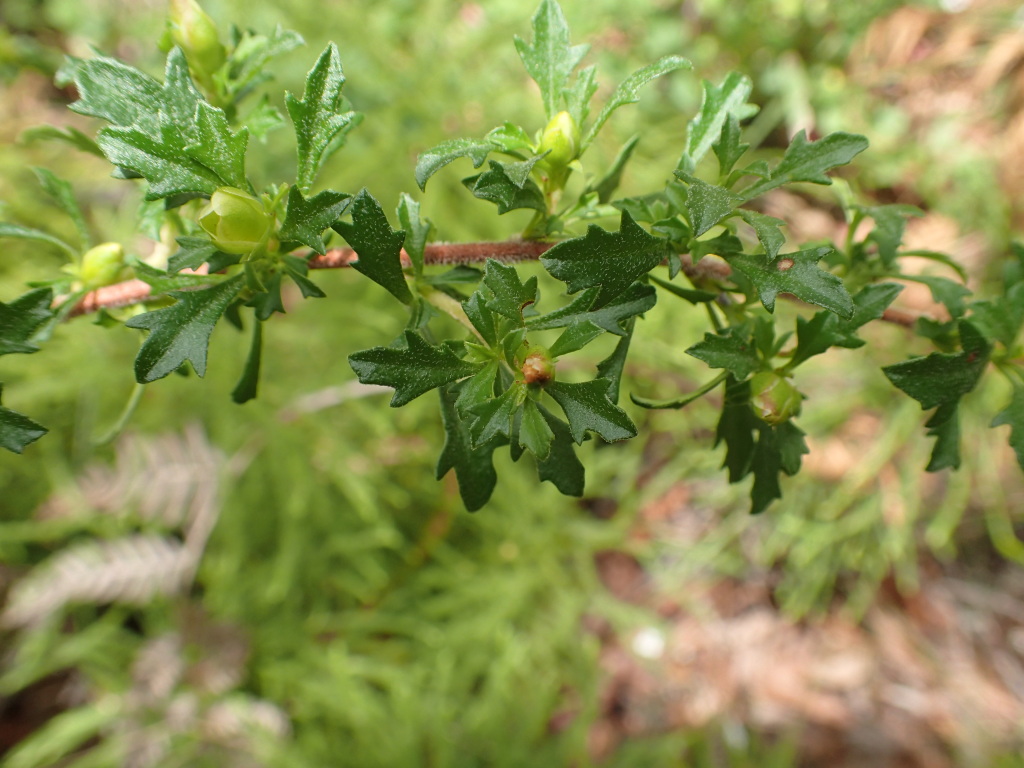Hibbertia diffusa
R.Br. ex DC.Prostrate to decumbent shrubs with pubescent to tomentose branches to 0.5 m long. Vestiture of forward-directed simple hairs more or less curved to coiled. Leaves linear-oblanceolate to broadly spathulate, 4–28 mm long, 3–14 mm wide, usually unequally toothed or lobed, puberulous to glabrous; apex acute to obtuse; base cuneate; margin scarcely recurved. Flowers sessile, terminal mainly on short shoots with usually 1 triangular sheathing bract 1.3–2.6 mm long; sepals 3.8–5.4 mm long, unequal, glabrous; petals obovate, 5.2–10.4 mm long, bright yellow; stamens 20–25 in groups around the ovary; filaments free; carpels 2 or 3, glabrous. Flowers Sep.–Nov.
NIS, EGU, WPro, HSF, HNF. Also Qld, NSW. Scattered and uncommon, usually on shallow, rocky soils in dryish open-forest and woodland, eastward from near Maffra (e.g. upper Avon River, Genoa River, Howe Range).
The leaves vary greatly in overall shape, as well as the number and shape of teeth within and between the widely separated populations throughout its range.
Hibbertia monogyna DC. is one of a number of forms of the H. diffusa complex which are in need of clearer delineation.
Toelken, H.R. (1996). Dilleniaceae. In: Walsh, N.G.; Entwisle, T.J., Flora of Victoria Vol. 3, Dicotyledons Winteraceae to Myrtaceae, pp. 300–313. Inkata Press, Melbourne.
 Spinning
Spinning
